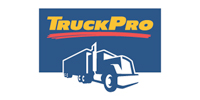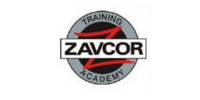Productivity gains are coming to those who think outside the traditional 53-foot box
In a Tim Hortons drive-thru, the call of a “double-double” refers to a coffee with two creams and two sugars, but this is not the only way that doubles are important to the caffeine-dispensing cultural icon.
The TDL Group, which oversees Tim Hortons’ private fleet, is among the growing list of companies hooking up to Long Combination Vehicles (LCVs). Its latest turnpike doubles – pairing two 53-foot trailers behind a single tractor – make nightly trips between Kingston, Ontario and Vaudreuil, Quebec. That is on top of the fleet’s extended combinations in other jurisdictions which include triple 28-foot trailers, and the Rocky Mountain doubles with 53-foot lead trailers and 28-foot pups.
The gains are not limited to productivity alone. “We have seen an additional 0.5 km/litre [about 1 mpg] improvement in fuel efficiency overall to go along with improving our carbon footprint,” says Mark Mostacci, TDL’s national manager – commercial fleet and compliance, referring to the turnpike doubles. “We currently have six [Ontario] permits and could easily use an additional six permits for our linehauls today.”
The configurations are obviously not for everyone. While early adopters of the twinned 53-foot trailers include retail giants such as Walmart, Loblaw and Canadian Tire, other companies have been slow to embrace the extra cubic space. Ontario recently expanded its program to allow up to 100 fleets a maximum of six permits each, but as of this April it had approved no more than 64 carriers and 258 permits. “The uptake has been very gradual,” agrees James Perttula, manager of the Ontario Ministry of Transportation’s Goods Movement Office, and one of the architects of the program.
Of course, adopting the equipment involves much more than filling out some paperwork and coupling to an extra trailer. Regulators continue to place strict restrictions on the industry’s longest trucks. The TDL Group, for example, had to complete engineering assessments of its routes and rebuild curbs near the fleet yard. Every Ontario fleet that wants to use this equipment also has to be a member of the Private Motor Truck Council of Canada or the Ontario Trucking Association, the associations which helped regulators develop the LCV program’s conditions, while drivers need 1,000 km of practical LCV training and are limited to traveling at certain times.
The province also took the opportunity to mandate Electronic Stability Controls on LCVs in a bid to promote the technology. “It had a broader safety benefit across the fleet,” Perttula explains.
It is not the first time the province has used the promise of longer trucks as a way to promote new components. When 53-foot trailers were first approved for widespread use, the brake systems had to have Automatic Slack Adjusters.
Once an LCV is on the road, meanwhile, the trips are closely monitored. Auditors track GPS records to ensure the vehicles stick to identified routes and remain close to 90 km-h [55-mph] speed limits. Some fleets have already faced temporary suspensions after running afoul of the latter requirements.
All the extra rules appear to have delivered dividends. “We’ve had an excellent safety record, and they’re probably the safest trucks on the road,” Perttula says of the Ontario experience. When there have been collisions, the problems could not be linked to the vehicle’s length. For example, an extra trailer has nothing to do with a car that is in a head-on crash with a left-turning tractor.
“The partnership we have had with industry has been a really important thing,” he adds, referring to the two participating associations. “It wasn’t just in the development of the program, but it’s been in the management of the program and the decision [leading to the] growth of the program.”
Just don’t expect to see turnpike doubles traveling from coast to coast anytime soon. Ontario limits the trucks to divided highways with restricted access, and that effectively closes the door on any westbound trips. Its longest configurations are not permitted in Michigan, either, requiring trailers to be uncoupled before crossing the Ambassador Bridge at the Canada-U.S. border. New Brunswick and Nova Scotia, meanwhile, have yet to require LCVs to have Electronic Stability Controls. “Most of the dimensional requirements are the same, but there are some minor differences and we’re talking about where we can adjust,” Perttula says.
Wherever adjustments have been made, barriers have fallen, and that has led to a growing number of LCVs in regions across North America.
There may even be other productivity gains to come.
Super Cubes and triple 53s
Ontario has hardly been shy about embracing unusual vehicle combinations. By adopting the multiple axles of “Michigan configurations,” it already has some of the heaviest gross vehicle weights in Canada. And now it is allowing Walmart to test a “super cube” configuration with a 60.5-foot dropdeck trailer and 5,100 cubic feet of space. A drome box loaded at the back of the cab can hold four skids of its own.
As many as five fleets are allowed to be part of the pilot project, and one fleet is now asking about using a version with a flatdeck trailer, Perttula says. A chance to use the latter configuration will depend on dynamic performance tests, which are looking at rollover thresholds, avoidance manoeuvres and the amount of off-tracking at high or low speeds.
The new trailers allow Walmart to deliver more products per trip, reducing the environmental impact, said Andy Ellis, senior vice-president of supply chain and logistics for Walmart Canada. It’s also good business for a company with freight that tends to cube out before reaching maximum allowable weights. But the retailer doesn’t expect to keep such productivity gains to itself. “Sustainability is not a competitive advantage. We’ll share the knowledge and technology put into this truck with anyone who’s interested,” he added.
In Saskatchewan, Loblaw is in the second year of a pilot study testing triple-53-foot trailers, running at nights between Saskatoon and the food retailer’s 2,000-acre Global Transportation Hub in Regina. But the configuration’s broader use would obviously be limited to long, straight stretches of highway. In fact, LCVs will always be somewhat limited in their routes. Fewer than one in four highway interchanges could handle turnpike doubles, according to research by the American Association of State Highway and Transportation Officials (AASHTO).
The broadest productivity gain of all could involve taking another look at traditional 53-foot trailers. The Coalition for Transportation and Productivity (CTP), which represents 200 shippers and allied associations, has been vocal in praising the U.S. House Committee on Transportation and Infrastructure, which is exploring the widespread use of three-axle semi-trailers and Gross Vehicle Weights up to 97,000 lb., up from the 80,000-lb. tandems that ply today’s interstate highways.
“Truck capacity has dropped by 16% since the recession started, and the 30-year-old federal vehicle weight limit compounds the problem by forcing many trucks to travel when they are only partially full,” said CTP Executive Director John Runyan.
Don’t expect the weights to increase on U.S. interstates overnight. The proposed Safe and Efficient Transportation Act (HR 612) would leave final decisions to individual states. Still, some jurisdictions appear to be relatively prepared for the idea. Most New England states allow heavier trucks, and jurisdictions in the upper Midwest are ready to go, he says. Southeastern states also allow heavier weights on five axles.
Much of this proposal’s success hinges on a U.S. Department of Transportation study, which will release preliminary findings in the spring of 2014. Says Runyan: “That will go a long way to deciding whether we can advance the issue.”
























































